Like most of Patagonia’s products, its Micro Puff Hoody conforms to certain ecological and ethical pillars as it proudly sports Fair Trade Certified and bluesign accolades.
- Best waterproof mountain bike jackets | 10 tried and tested by our experts
- Best waterproof jackets for road cycling and commuting | 15 tried and tested by our experts
Along with its ethical credentials, Patagonia also claims the Micro Puff Hoody’s synthetic construction makes it the warmest jacket for its weight it's ever built. And that's just as well, considering the price.
Patagonia Micro Puff Hoody details and specifications
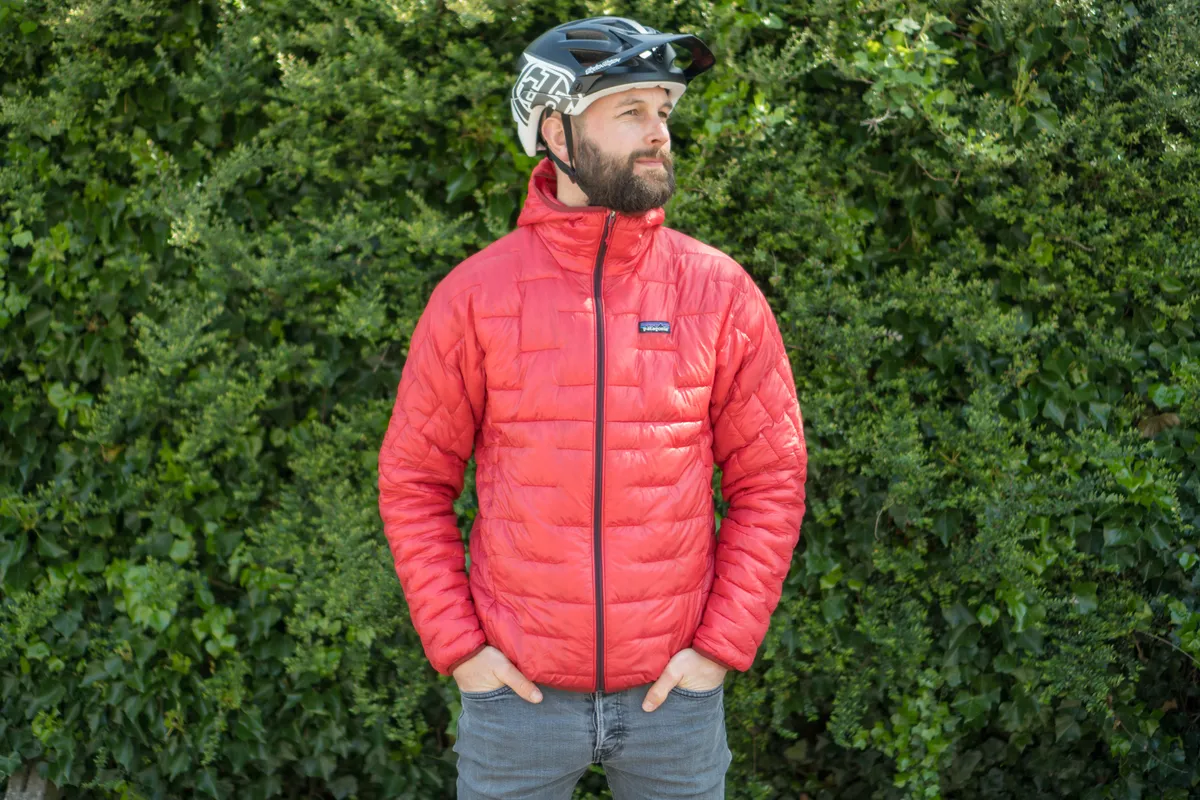
My fire-coloured size medium tipped the scales at 280g, and that impressively low weight is down to its construction.
The shell is made from a lightweight nylon ripstop material called Pertex Quantum that’s been treated with a durable water repellent (DWR) finish.
The main bulk of the jacket is in the synthetic PlumaFill insulation. Patagonia claims this mimics the properties of natural down’s structure (bird feathers) while retaining the insulation and heat retention properties of synthetic materials when wet.
It has sewn-in dividers visible from the exterior that are claimed to help limit the insulation clumping or migrating by keeping it in small pockets, which Patagonia claims should further its thermal properties.
The main one-way zip has an internal storm flap and a small cover to protect its wearer’s chin when it’s done up.
There are two external zipped pockets and two large internal elasticated pockets. The left-hand external pocket doubles up as a stash bag for the jacket with a carabiner clip loop.
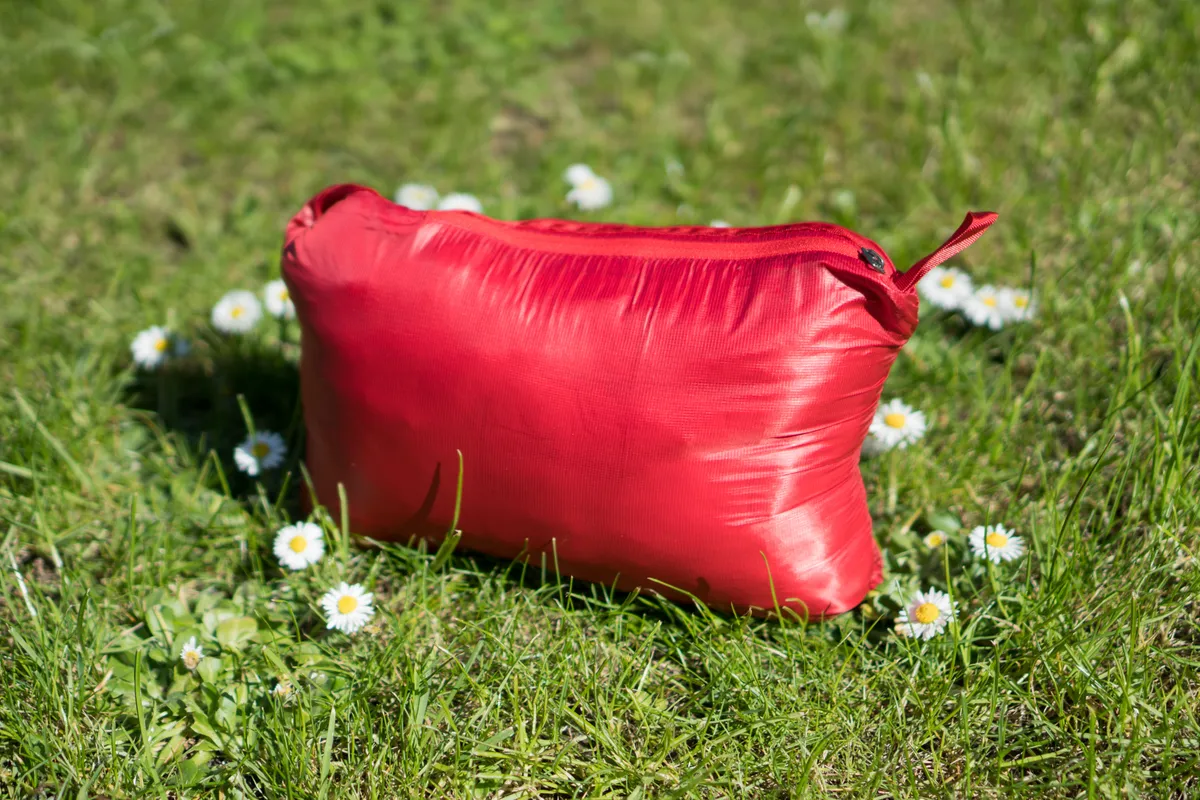
When my medium-sized jacket was stowed in the pocket, the bag roughly measured 24cm x 15cm x 9cm.
The cuffs and hem are elasticated and reinforced with a slightly thicker bit of piping around their edges.
Similarly, the circumference of the hood is elasticated and reinforced. The hood is designed to hug the contours of its wearer’s head and fit under helmets.
Patagonia Micro Puff Hoody performance
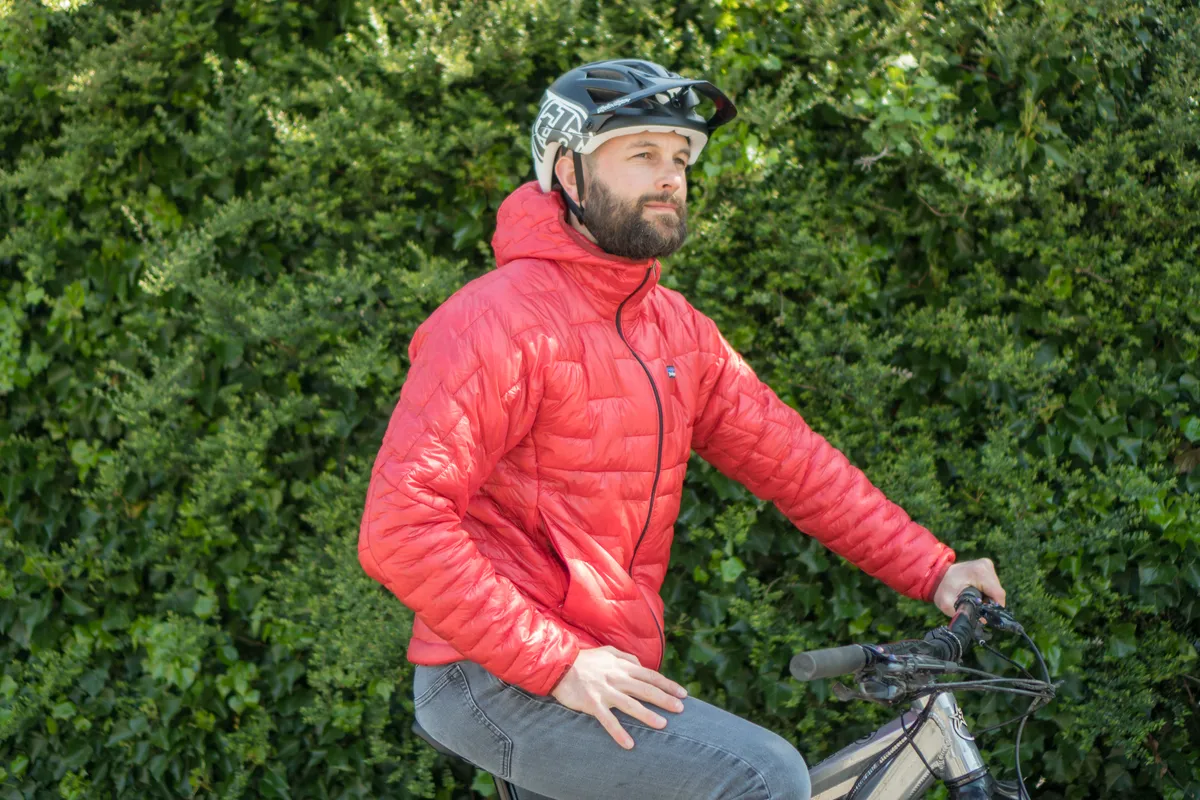
There’s no denying the Micro Puff’s an expensive bit of kit, but the age-old adage of “you get what you pay for” really stands true.
Donning the puffer jacket for the first time reveals just how lightweight yet voluptuous the insulation feels, and didn't make me feel like I was wearing a freshly-poofed pillow.
It still managed to exude quality worthy of its price tag despite the minimal features and simplistic design.
Patagonia Micro Puff Hoody fit
With a reasonably snug fit, the size medium was perfect for my 178cm tall, 72kg frame. And while the cut isn’t skin-huggingly tight around the waist or chest, it’s not baggy either.
The sleeves weren’t too short, exposing none of my wrist in the riding position, and the jacket extended to just below my hips.
The full-length, one-way main zipper has a fabric cord so was easy to operate with thick winter gloves. When done up to the top, the neck aperture closed fairly tight around my chin.
The hood was snug-fitting and didn’t sag over the top of my eyes or encroach into my peripheral vision at the sides – often a problem with looser hoods. And because it was so snug, very little heat escaped or cold air entered around the hood’s opening.
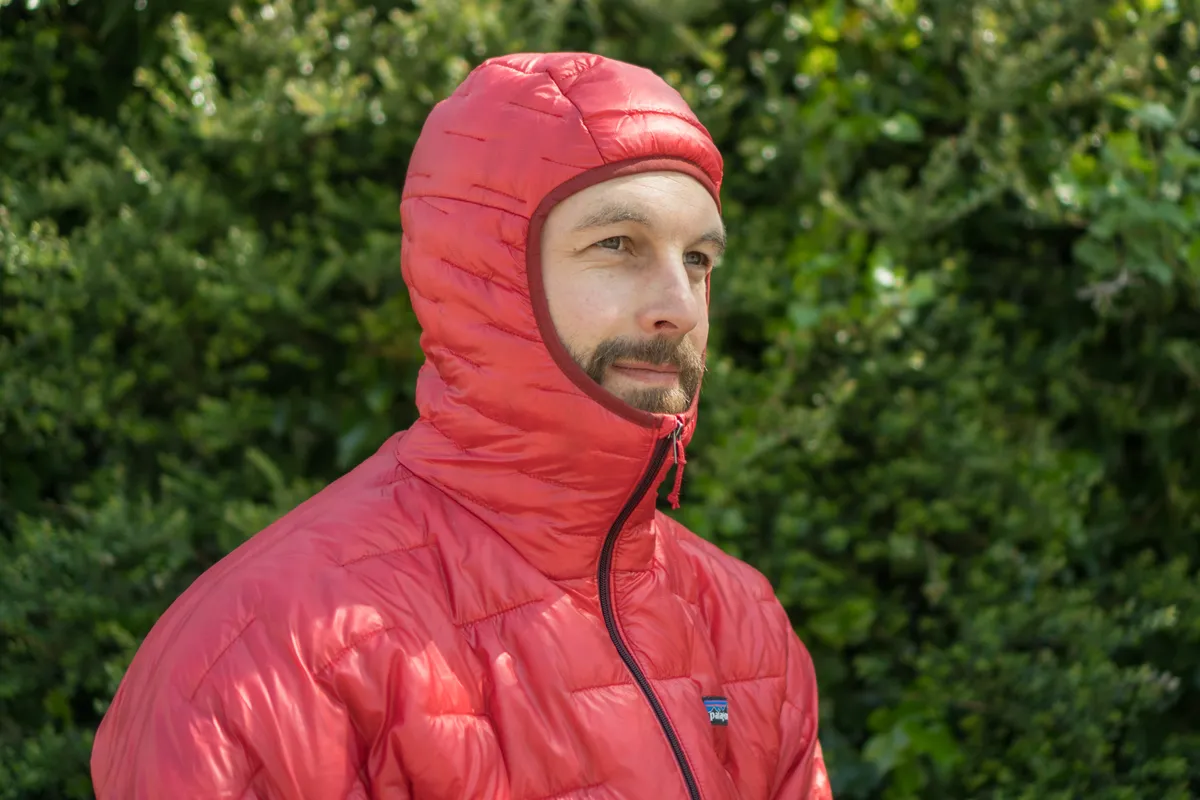
As promised, it fitted under helmets well, but I needed to loosen the helmet's retention cradle for it to be comfortable. However, I do advise caution wearing a secondary layer of fabric between your head and helmet, no matter how thin, because it could compromise the helmet’s ability to perform as intended in a crash.
The elasticated cuffs weren’t as tight as the hood, though, which on faster descents caused air to flow up them.
The solution was to get my gloves to fit over the cuffs to stop air flow. But, off the bike, when you’re most likely to wear the jacket, this really wasn’t a problem.
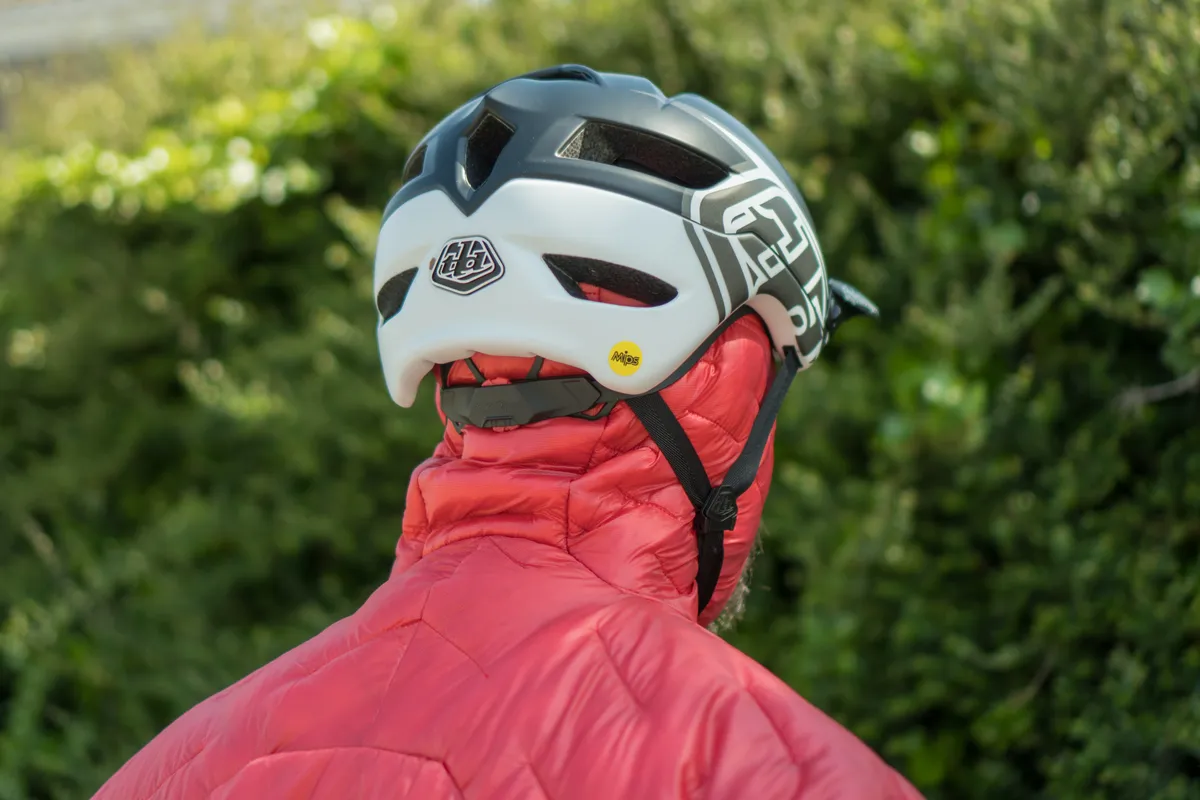
Patagonia Micro Puff Hoody pockets
The zipped pockets were generous enough to store a host of items, and it's the item's weight that's the most prohibitive factor rather than bulk. For reference, they were large enough to comfortably store a 650ml water bottle.
Internally, the stash pockets are bigger still. There was enough depth to hold a 750ml water bottle in its entirety, although my preferred use for the internal pockets was for gloves, hats, neck tubes or sunglasses.
Considering the jacket’s minimalistic looks and overall fit, it hides its number of usable pockets well, even when they're full.
Patagonia Micro Puff Hoody waterproofing
The DWR coating certainly surprised and impressed me compared to a lot of other insulated jackets and tougher soft-shell coats I’ve worn in downpours and passing showers.
However, the Micro Puff is best worn as a mid-layer under a hard-shell waterproof if you’re going to be venturing out in the grottiest conditions around.
The reinforced piping around the elasticated cuff, sleeve and hem openings didn’t repel water as well as the jacket’s main fabric and became saturated after only a few minutes in a particularly heavy downpour.
While this didn’t cause discomfort, the openings remained wetter than the rest of the jacket.
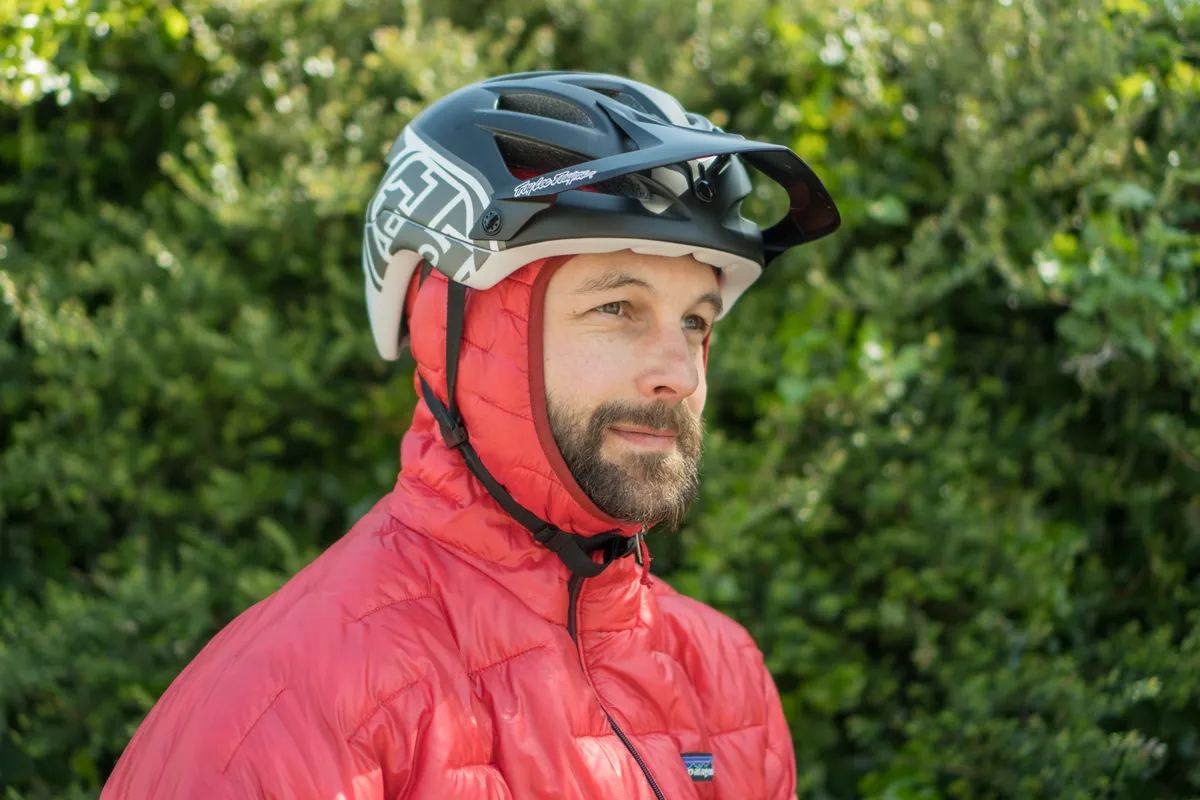
Patagonia Micro Puff Hoody insulation performance
Its ability to maintain heat had to be one of its best features. This thermal prowess meant it was easy to become reliant on it as a before- and after-ride companion to keep warm in a very wide range of temperatures.
And that was the other impressive feature. I found it was comfortable to wear in temperatures up to 16 degrees with minimal layering underneath and, with a base- and mid-layer beneath it, I was happy in conditions as low as 3 to 5 degrees depending on windchill and humidity. Although its versatility didn’t surprise me, it did impress me.
As did the when-wet performance. Insulated jackets are never going to perform as well when they're wet, but the Micro Puff still insulated well. Getting the insulation entirely saturated was difficult, but it's not intended to be used as a waterproof jacket, and if you do use it like this it will eventually wet through.
When it was soaking, it did provide enough thermal insulation to keep me warm with a base- and mid-layer underneath in temperatures as low as 7 degrees, but there was no denying that it wasn’t as good as its performance when dry.
The Pertex Quantum feels incredibly thin, but I’ve not managed to rip or tear the jacket yet.
How to pack the Patagonia Micro Puff Hoody
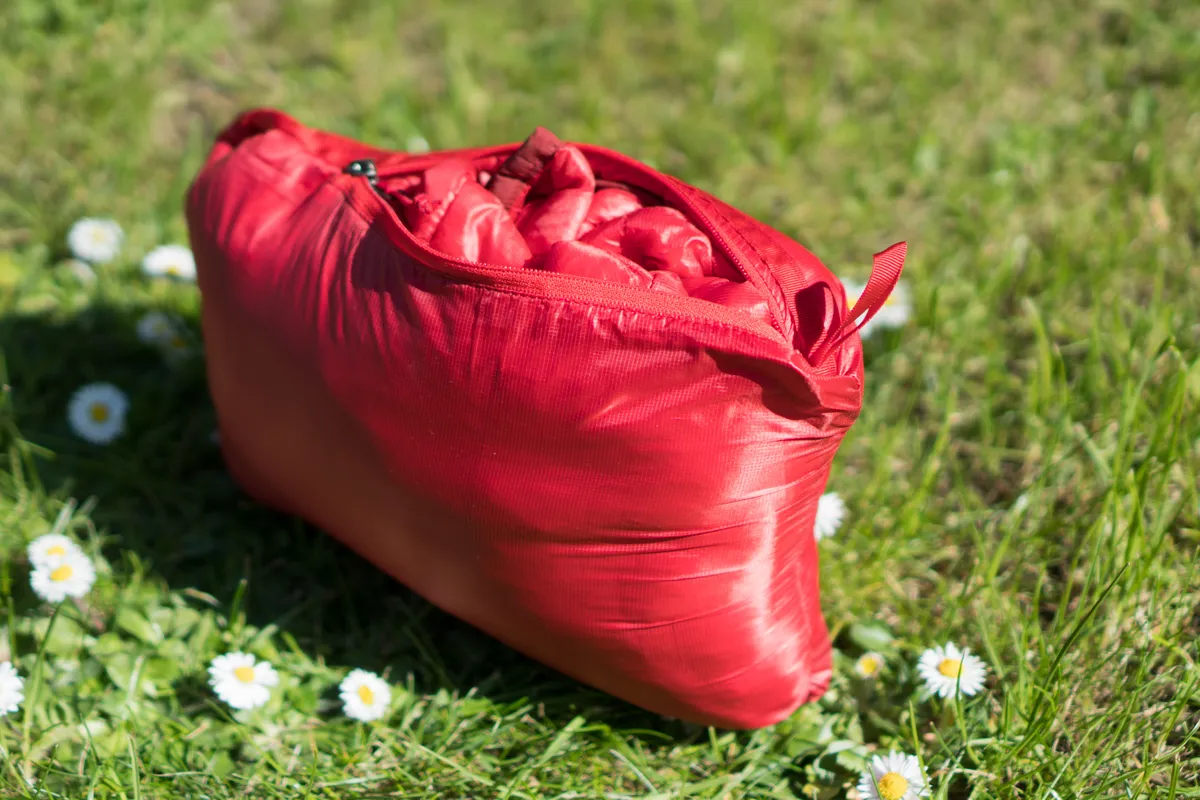
Packing the Micro Puff Hoody into its own pocket was easy.
Start by opening the left-hand pocket zip, then begin packing it into the pocket from the inside of the jacket. As it fills the pocket internally, it will turn itself inside out and you’ll be able to close the now-formed pouch with the small zipper.
Once packed down into the left-hand pocket it fits happily into most day bags and can even be squeezed into a rear roadie-style jersey pocket, if you’re lucky enough to have them on your riding kit.
But because the jacket’s in-built bag is the inside of one of its pockets, it's important not to get the 'bag' dirty because you don't want your valuables to get dirty the next time they're stashed in there.
Patagonia Micro Puff Hoody bottom line
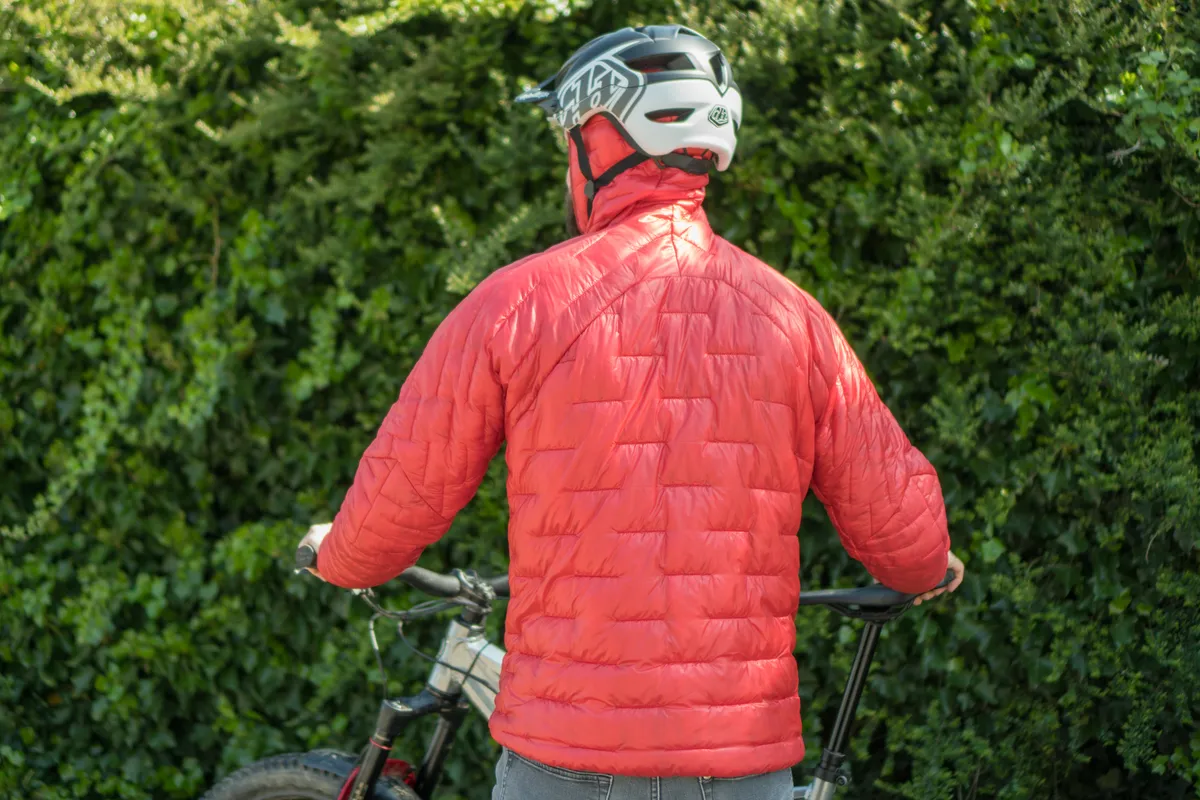
There’s no denying the Micro Puff Hoody is pricey. But that investment is getting you some mighty impressive performance, good looks and a product from a company that supports workers' rights and wants to help the environment.
It's impressively packable, extremely lightweight, lovely and warm, and looks at home on and off the bike. I found it performed best as a heat-generating mid-layer but there’s no reason why it couldn't be worn as an outer layer thanks to the DWR coating that provides some protection from the elements.
It is enormously versatile too, being comfortable to wear in a whole host of temperatures and weather conditions.
In fact, the Patagonia Micro Puff Hoody is so good, I pretty much live in mine 24/7 and can’t wait for the temperatures to decrease so I can wear it even more!
Product
| Brand | Patagonia |
| Price | A$399.95, €280.00, £250.00, $299.00 |
| Weight | 280g |
| br_whatWeTested | Patagonia Micro Puff Hoody Fire colour, size medium |
Features
| Gender | mens |
| Clothing key features | hooded |
| Clothing key features | thermal |
| Clothing key features | water_resistant |
| Clothing key features | zip_closure |
| Features | Pertex Quantum shell with DWR treatment, PlumaFill insulation, full-length single-direction zipper, two external zipped pockets, two internal pockets, under helmet hood, elasticated cuffs, hem and hood opening. |
